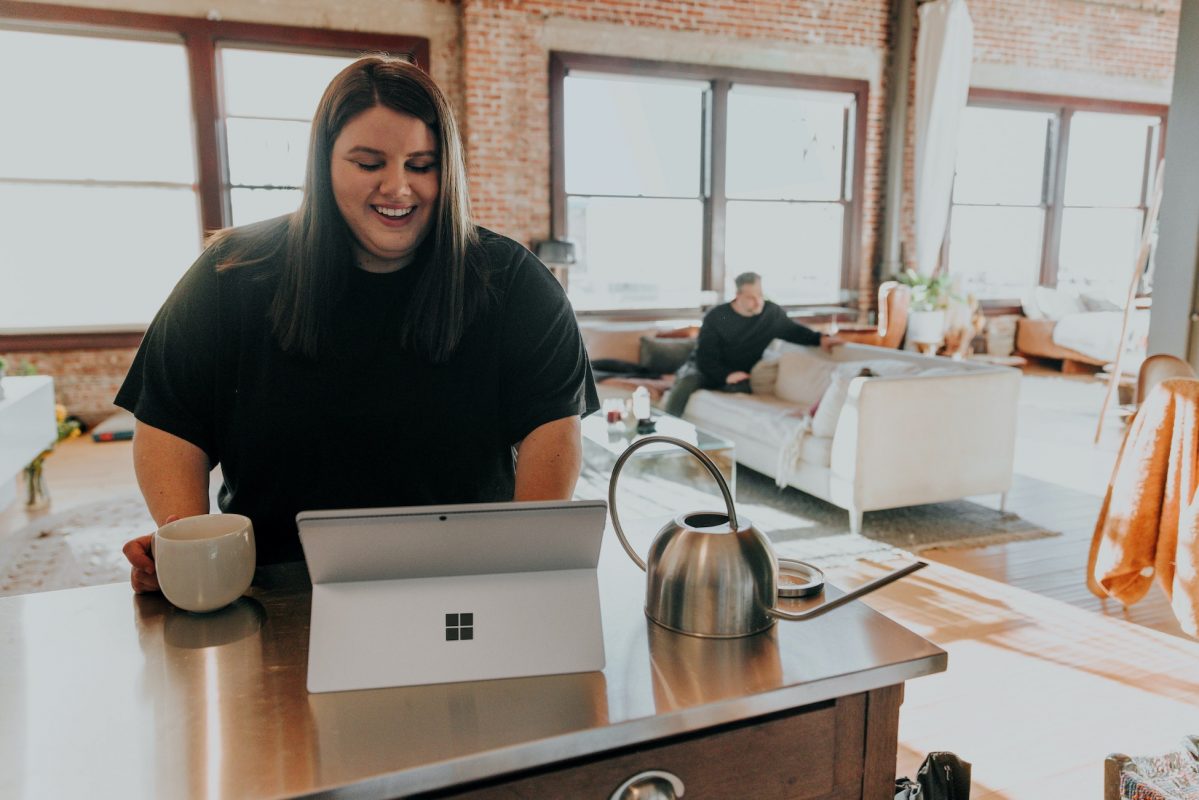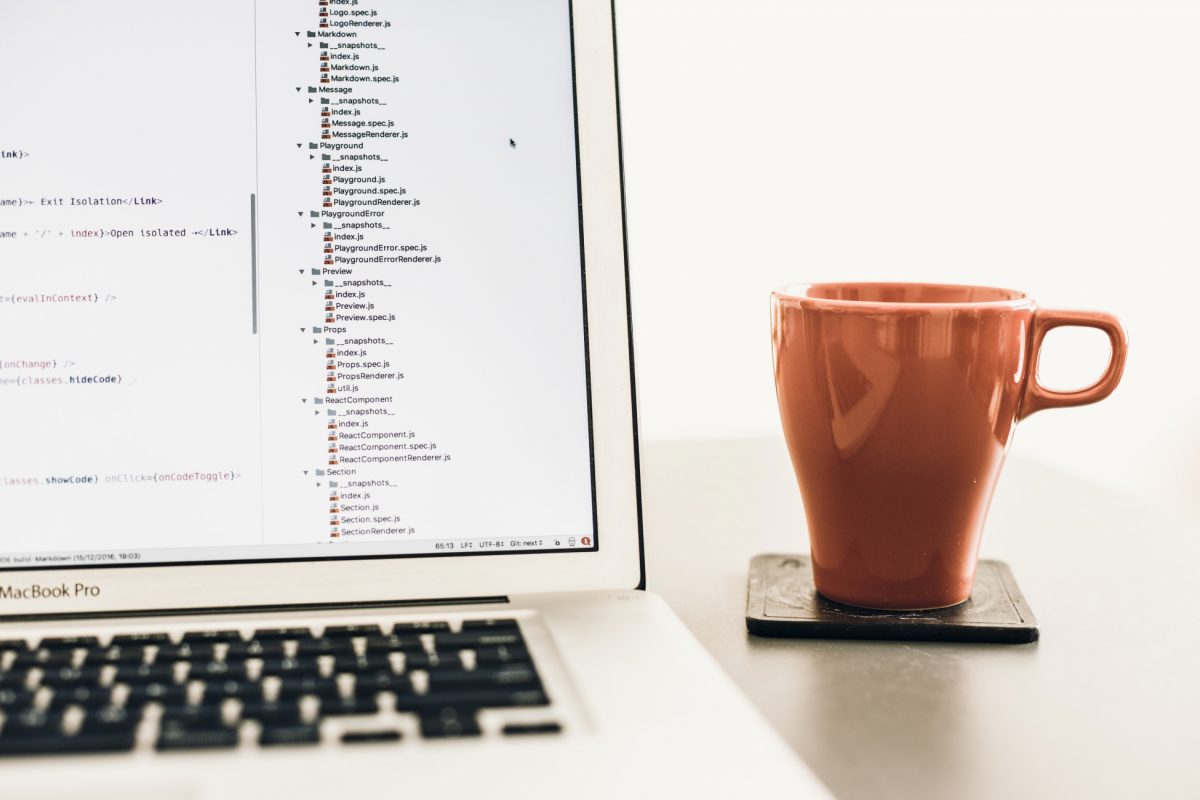Ready to unlock the door to your first home, but feeling overwhelmed by the swirling vortex of terms like “down payment,” “credit score,” and “fixed versus adjustable-rate”? Don’t worry—you’re not alone. Whether you’re a millennial or Gen Z navigating the financial maze with a healthy dose of humor and determination, this guide is here to demystify the mortgage process. We’re about to break down everything from crunching numbers to choosing the right lender, serving up the insider knowledge you need to confidently apply for a mortgage and eventually secure that dream home.
How to Apply for a Mortgage Table of Contents
Understanding the Mortgage Landscape
Assessing Your Financial Health: The Pre-Application Phase
The Credit Score Conundrum and How to Win at It
Mortgage Options: Choosing the Right Type for Your Journey
Prequalification and Preapproval: Building Your Financial Power-Up
Gathering Your Documentation: The Paperwork Party
Finding and Choosing a Lender: Your Mortgage Matchmaker
Navigating the Mortgage Application Process
Tailored Tips for Millennial and Gen Z Homebuyers
Overcoming Common Pitfalls in the Mortgage Process
Resources and Community Support: Your Next Steps
Your Journey to Homeownership Begins Now
Understanding the Mortgage Landscape
When you think “mortgage,” your brain might immediately flash images of giant banks, endless paperwork, and some intimidating financial lingo. But applying for a mortgage isn’t a mystical ritual reserved for Wall Street wizards. In reality, it’s a series of logical, manageable steps—each one designed to help you secure the funds needed to buy your home. Let’s break it down.
A mortgage is essentially a home loan: you borrow money from a lender to purchase a home, and in return, you agree to pay back the loan over a set period (typically 15, 20, or 30 years) with interest. There are various types of mortgages, each with unique features and benefits to match your financial situation and goals. From fixed-rate mortgages that offer stable payments over the life of the loan to adjustable-rate alternatives that may start off lower, understanding your options is a critical first step.
In the coming sections, we’re going to uncover the nuances of the mortgage application process, clear up some common misconceptions, and arm you—yes, you—with the knowledge to approach the world of mortgages with confidence and clarity.
Assessing Your Financial Health: The Pre-Application Phase
Before diving headfirst into the mortgage application process, it’s vital to take a good, hard look at your current financial situation. Think of this phase as a financial tune-up—like taking your car in for a service before a long road trip. You wouldn’t drive cross-country with a faulty engine, would you?
Start by examining your credit score. Your credit score is one of the most important factors lenders use to gauge your financial reliability. A high score can unlock lower interest rates, while a lower score might mean paying more in interest or even having your application rejected. If your score isn’t where you’d like it to be, this is the perfect time to implement strategies to improve it—like paying off outstanding debts or disputing any inaccuracies on your credit report.
Equally important is to evaluate your income, existing debts, and overall financial commitments. Lenders will assess your debt-to-income ratio (DTI) to decide whether you’re a good candidate for a mortgage. Keep in mind that reducing any unnecessary expenses and building a robust savings cushion can significantly enhance your financial standing.
Lastly, it’s time to get a handle on your down payment. Saving up for a down payment might feel like climbing a mountain, especially if you’re juggling student loans or other financial obligations. But even if you’re starting small, having a plan in place and considering options like first-time homebuyer programs or low-down-payment loans can set you on the right track.
The Credit Score Conundrum and How to Win at It
Let’s face it: credit scores can feel like that final boss in your favorite video game—challenging but not unbeatable. Your credit score is a numerical snapshot of your financial health and reliability, and it plays a starring role in getting that mortgage approval.
So, how do you know what your score is? Start by checking your credit report from one (or all three) of the major credit bureaus—Equifax, Experian, and TransUnion. Many websites and financial institutions offer free credit score checks, so take advantage!
Once you know your score, you can begin the process of upgrading it. Here are some quick tips:
- Pay on Time: Timely payments are the unsung heroes of a high credit score.
- Reduce Debt: Aim to keep your credit utilization ratio low; ideally below 30%.
- Correct Errors: Dispute any inaccuracies you spot on your credit reports.
- Avoid Unnecessary Credit Inquiries: Each time you apply for credit, it can cause a temporary dip in your score.
Whether you’re still building a credit history or maintaining a high score, remember that every financial move counts. Think of it as leveling up your personal finance game before entering the critical mortgage arena.
Mortgage Options: Choosing the Right Type for Your Journey
Every homebuyer is unique, and so are the mortgage options available to you. Deciding on the right type of mortgage is like choosing the perfect pair of sneakers—it needs to fit your lifestyle, deliver comfort, and support your every step. Here’s a rundown of the most common mortgage types you’re likely to encounter:
Fixed-Rate Mortgages
A fixed-rate mortgage is your go-to choice for predictability. With a fixed-rate, the interest rate remains constant for the entire term of the loan, so your monthly payments stay the same. This is ideal if you value stability and are planning to settle down in your new home for a long period.
Adjustable-Rate Mortgages (ARMs)
ARMs typically offer lower starting interest rates compared to fixed-rate loans. However, after an initial period, the rate can change periodically based on market conditions. This option can be attractive if you expect to refinance or sell before the adjustable period kicks in.
FHA Loans
If your credit score isn’t exactly glowing or you’re struggling to scrape together a hefty down payment, Federal Housing Administration (FHA) loans can be a friendly option. They require lower down payments and have more flexible qualification criteria—perfect for first-time homebuyers.
VA Loans
For the service members, veterans, and their families out there, VA loans offer competitive interest rates and require little to no down payment. It’s a great way to make homeownership more accessible for those who have served.
USDA Loans
Backed by the United States Department of Agriculture, USDA loans are designed for rural property purchases. They offer low interest rates and don’t require a down payment, making them an excellent choice if you’re looking to live away from the hustle and bustle of city life.
With these options in mind, it’s important to consider your long-term financial goals and current lifestyle. Whether you’re looking for predictable payments, low initial costs, or flexibility for future refinancing, there’s a mortgage type out there that’s just right for you.
Prequalification and Preapproval: Building Your Financial Power-Up
In the quest to apply for a mortgage, prequalification and preapproval are your financial power-ups. Think of them as your golden tickets—they show sellers and real estate agents that you’re not just window-shopping but are serious about buying.
Prequalification: This is a preliminary process where a lender gives you a rough estimate of how much you might be eligible to borrow based on your financial information. It’s a great starting point to gauge your buying power and set realistic expectations.
Preapproval: Taking it a step further, preapproval is a more in-depth process where a lender examines your income, credit history, and financial documentation. If you’re preapproved, you receive a conditional commitment for a specific loan amount. This not only boosts your confidence but also gives you a competitive edge when making an offer on a property.
While both steps involve a bit of paperwork and number crunching, getting prequalified and preapproved sets the stage for a smoother, faster home buying process. Plus, it demonstrates to sellers that you’re a serious contender.
Gathering Your Documentation: The Paperwork Party
Now that you’ve buffed up your finances and nailed down your mortgage type and preapproval, it’s time for the paperwork party. Lenders will want to take a deep dive into your financial life, so you’ll need to get organized and gather the necessary documentation.
Here’s a rundown of the documents most lenders will ask for:
- Proof of Income: Pay stubs, tax returns, and W-2 forms are key to demonstrating steady income.
- Bank Statements: Lenders want to see your savings and checking account history to assess your financial stability.
- Employment Verification: A letter from your employer or an employment verification report will confirm your job status and tenure.
- Credit History: Although the lender will perform its own check, be prepared with an updated copy of your credit report.
- Asset Documentation: This includes records of investments, retirement accounts, and any other assets that can bolster your financial profile.
- Debt Information: Be ready with details on student loans, car loans, credit card balances, and other existing debts.
Being organized not only streamlines the application process but also helps you feel more in control. Create a checklist, gather these documents ahead of time, and store digital copies for quick access. A little preparation goes a long way toward avoiding last-minute scrambles.
Finding and Choosing a Lender: Your Mortgage Matchmaker
Just as finding the right partner in life is important, choosing the perfect lender is a critical step in your mortgage journey. With a wide range of lenders—from traditional banks and credit unions to online mortgage brokers—the key is to find one that aligns with your financial needs and personality.
Start by shopping around and comparing rates, terms, fees, and customer reviews. Don’t hesitate to ask questions about loan programs, available down payment assistance, and any special incentives they might offer. Remember, transparency is key. A good lender will be upfront about costs, timetables, and any potential hurdles.
If you’re a tech-savvy millennial or Gen Z’er, consider online lenders that offer streamlined applications and digital management tools. Many modern lenders boast user-friendly apps, real-time status updates, and even chat support to walk you through every step of the process.
Trust your gut when choosing a lender. Whether you prefer the personalized touch of a local bank or the convenience of an online platform, make sure you feel comfortable and confident that your mortgage journey is in good hands.
Navigating the Mortgage Application Process
With your preapproval in hand, your documentation organized, and a lender you trust, it’s time to officially apply for your mortgage. While this stage might seem daunting—think epic boss fight in a video game—it’s simply a matter of following a series of steps that bring you closer to homeownership.
Here’s what to expect:
Step 1: Submission of Application
Your lender will ask you to complete a comprehensive mortgage application form. This form will request personal and financial details, along with information about the property you’re interested in. Accuracy is essential here—double-check all your entries to avoid unnecessary delays.
Step 2: Underwriting
Once your application is on the table, it moves to underwriting. Think of underwriting as a deep-dive investigation where the lender’s expert team reviews your financial health, verifies your documentation, and assesses the property’s value. This step is crucial, as it determines whether you meet the criteria for the loan.
Step 3: Loan Processing
If underwriting gives a thumbs-up, your application moves into the processing stage. During this phase, additional paperwork may be requested, and the lender might order an appraisal of the property you plan to buy. This appraisal ensures that the property’s value aligns with the loan amount.
Step 4: Final Approval
After processing comes the final approval. The lender will review everything one last time, confirm the details, and issue a clear-to-close decision. Congratulations—this means you’re one step closer to signing on the dotted line!
Throughout this process, communication is key. Stay in touch with your lender, respond promptly to any requests, and don’t be afraid to ask questions if you’re unclear about any step. Remember, this is a partnership—a collaborative effort to secure your financial future.
Tailored Tips for Millennial and Gen Z Homebuyers
As a millennial or a member of Gen Z, entering the real estate market can feel like navigating a jungle gym of student loans, gig work, and skyrocketing rent prices. But here’s the silver lining: newer financial products and a tech-forward approach have created opportunities that didn’t exist a decade ago.
Here are some extra tips to help you overcome the unique challenges of this generation:
- Embrace Technology: Take advantage of online mortgage calculators, digital budgeting apps, and virtual lender consultations. These tools can simplify complex processes and help you stay on top of your financial game.
- Look for First-Time Homebuyer Programs: Many states and local governments offer grants, tax credits, and other incentives tailored for first-time buyers. Research these programs early—they can make a significant difference in reducing out-of-pocket expenses.
- Leverage Social Media: Follow reputable financial advisors, lenders, and real estate experts on platforms like Instagram, Twitter, and TikTok. Many professionals share insider tips, current market trends, and even live Q&A sessions that can clarify your doubts.
- Consider a Mortgage Broker: If the mortgage process seems too opaque, mortgage brokers can help match you with lenders that best suit your needs. They act as intermediaries and might even negotiate better terms on your behalf.
- Stay Educated: Financial literacy is a continuous journey. Take advantage of online courses, webinars, and workshops on home buying. The more you learn, the more power you have in negotiations.
The modern mortgage process is nothing like the intimidating, old-school methods of yesteryear. With the right tools and a proactive mindset, you can navigate the application process like a pro and set yourself up for a future of financial stability and homeownership.
Overcoming Common Pitfalls in the Mortgage Process
Even seasoned homebuyers can stumble over common pitfalls in the mortgage process. For newcomers, a few missteps can seem catastrophic, but awareness and preparation are your best allies. Let’s highlight some common challenges and how to beat them:
Misunderstanding Loan Terms: Terms like “interest-only,” “balloon payment,” or “prepayment penalty” might sound like fancy financial jargon. Take the time to ask your lender to break these down in plain language. Knowledge is power, and you deserve to fully understand every aspect of your loan.
Failing to Budget for Closing Costs: While your down payment is front and center, closing costs often hide in the fine print. These costs may include appraisal fees, title insurance, and attorney fees. Budgeting for them in advance can prevent unwelcome financial surprises at the end of your mortgage journey.
Overextending Yourself Financially: It’s tempting to stretch your budget to snag your dream property. However, buying a home should be a balanced decision—one that leaves you with enough breathing room to handle everyday expenses and unexpected financial hiccups.
Ignoring the Importance of a Home Inspection: Whether you’re a seasoned buyer or a first-timer, skipping a thorough home inspection can lead to costly repairs down the line. Ensure you hire a reputable inspector to assess the property’s condition before sealing the deal.
Neglecting to Lock in Your Interest Rate: Interest rates can be as unpredictable as the weather. Once you’re comfortable with your loan’s terms, consider locking in your interest rate to protect yourself against market fluctuations as you finalize your mortgage.
By being aware of these pitfalls and taking proactive steps to avoid them, you can transform potential hurdles into manageable stepping stones on your path to homeownership.
Resources and Community Support: Your Next Steps
The mortgage landscape can seem like a complex ecosystem filled with unfamiliar terms and procedures. But remember: you’re not alone in this journey. There’s a treasure trove of resources and communities ready to offer guidance, support, and real-life experiences to help you along the way.
Consider these steps as you chart your next moves:
- Online Forums and Social Media Groups: Platforms such as Reddit, Facebook, and specialized online communities are teeming with fellow homebuyers sharing tips, strategies, and success stories. It’s a great way to learn from others’ experiences and even ask questions about challenges you might face.
- Financial Literacy Websites and Blogs: There’s no shortage of educational content online designed to help demystify the mortgage process. From mortgage calculators to step-by-step guides, these resources offer valuable insights for every stage of your journey.
- Consult Financial Advisors or Mortgage Brokers: Sometimes a one-on-one conversation with a seasoned professional can provide tailored advice that online resources can’t. Don’t hesitate to invest in a consultation if it means gaining a clearer picture of your financial options.
- Local Workshops and Seminars: Many cities host free or low-cost homebuyer workshops that cover everything from budgeting to negotiating closing costs. These local events are also prime opportunities to network with experts and other aspiring homeowners.
- First-Time Homebuyer Programs: Government and nonprofit organizations often offer programs specifically designed to assist first-time buyers with down payments, closing costs, or even lower interest loans. Research what’s available in your area to see if you qualify for any assistance.
The idea is simple: leverage every available resource to empower yourself with the knowledge and community support necessary to navigate the mortgage process successfully. And hey, sometimes the best advice comes from someone who’s been in your shoes—not just from a textbook.
Your Journey to Homeownership Begins Now
The adventure of applying for a mortgage is more than just a financial transaction—it’s a journey toward independence, stability, and a future where you hold the keys to your own home. Every step, from assessing your financial health to crossing the finish line of final approval, is a building block that shapes your ultimate success.
As you dive into the process, remember to celebrate each milestone: that moment when your preapproval arrives, the relief of having your documentation in order, and the thrill of signing on the dotted line. It’s all part of transforming your dreams into a tangible reality.
Keep your sense of humor intact, lean on the advice of trusted experts, and tap into the collective wisdom of your peers. With patience, persistence, and the strategies outlined in this guide, you’re more than ready to conquer the mortgage process and step confidently into your new home.
The mortgage application process may seem daunting, but armed with these insights, a solid plan, and the support of a vibrant community, you’ll navigate it like a pro. Each challenge you overcome and every financial decision you make paves the way for lasting financial security and homeownership bliss.
Mortgage Application FAQs: Your Questions Answered
Here are some frequently asked questions that address common concerns about applying for a mortgage. If you’re feeling like you have a million questions, you’re in good company—many homebuyers share the same curiosity and anxiety about this big financial leap.
1. What is the difference between prequalification and preapproval?
Prequalification is an initial, less-formal assessment that gives you an estimate of how much you might be able to borrow, while preapproval is a more thorough review of your financial background that leads to a conditional commitment from a lender.
2. How important is my credit score when applying for a mortgage?
Your credit score is critical—it significantly influences the interest rate you’ll be offered and your overall chances of getting approved. A higher score generally means better loan terms.
3. What types of mortgage loans are available to first-time homebuyers?
There are several options, including fixed-rate loans, adjustable-rate mortgages (ARMs), FHA loans, and even specialized programs like USDA or VA loans, depending on your eligibility and regional availability.
4. How can I improve my financial standing before applying for a mortgage?
Prioritize paying bills on time, reduce outstanding debt, regularly review your credit report for errors, and build up your savings for a down payment and closing costs.
5. What documents will I need during the mortgage application process?
You’ll typically need proof of income (pay stubs and tax returns), bank statements, employment verification, credit history, and documentation of existing debts and assets.
6. Are online mortgage applications reliable and secure?
Yes, many reputable lenders offer online applications that are secure and convenient. Just make sure you’re using trusted websites and consider reading reviews before submitting your sensitive information.
7. How long does the mortgage approval process usually take?
The timeline varies by lender and individual circumstances, but the process—from preapproval through final underwriting—can typically take anywhere from a few weeks to over a month.
8. What factors might delay my mortgage approval?
Incomplete documentation, discrepancies in your financial records, low credit scores, or issues found during the home appraisal could all delay the process.
9. Is it a good idea to refinance my mortgage in the future?
Refinancing can be a smart move if interest rates drop or if your financial situation improves, but it’s important to balance the potential savings against any fees or long-term implications.
10. Can I get help if I have questions during the mortgage application process?
Absolutely. Don’t hesitate to reach out to your lender, mortgage broker, or seek advice from financial advisors. There are also many online forums and local workshops where you can share your concerns and learn from others.
Stepping into Your Financial Future with Confidence
The world of mortgages may seem intricate, but it’s also filled with opportunity and empowerment. By understanding your financial health, exploring the wide array of mortgage options, and carefully navigating the application process, you transform daunting challenges into stepping stones toward homeownership.
Every savvy financial decision you make not only propels you closer to owning your home—it also strengthens your financial independence. Embrace the journey, trust your instincts, and lean on the resources and community support available to guide you along the way.
Whether you’re just beginning to explore the idea of homeownership or you’ve been saving and planning for years, remember that every step, every question, and every bit of documentation is a part of a larger story—a story of empowerment, growth, and the realization of a dream. Your mortgage application isn’t just about securing a loan; it’s about laying the foundation for a bright future where you call the shots.
So, gear up, dive in, and take control of your financial journey. The home of your dreams is waiting, and with a confident approach and well-informed strategies, your path to homeownership is clearer than ever.
Celebrate every milestone along the way, trust in your ability to overcome challenges, and know that with persistence and the right information, you’re well on your way to unlocking a future filled with new opportunities and cherished memories.













